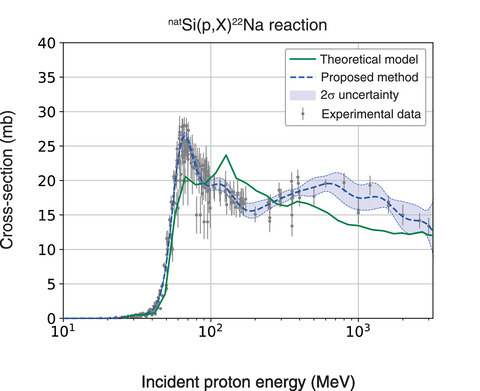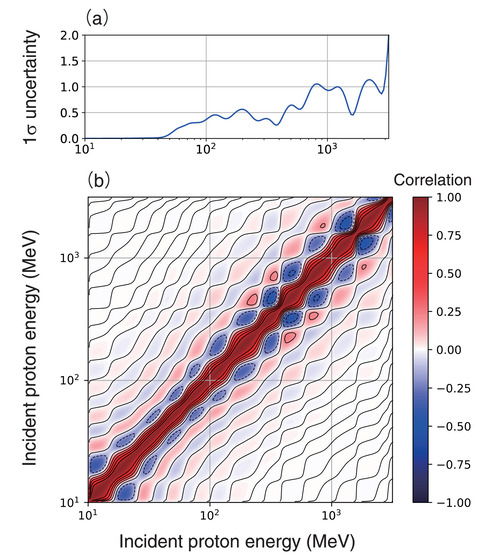
Fig.4-4 Estimated natSi(p,X)22Na cross-section using the theoretical model and proposed ML method

Fig.4-5 Uncertainty of the natSi(p,X)22Na cross-section estimated by the proposed ML method
Nuclear data are indispensable when simulating particle transport to estimate radiation doses, radioactive isotope production, and safety parameters of nuclear systems. The quality and quantity of nuclear data in the nuclear data libraries have been steadily enhanced owing to physicists' strenuous efforts; however, discrepancies between experimental data and model calculations remain, particularly at high incident energies. Further, conventional approaches used to improve theoretical models require a substantial amount of time and effort. In such cases, a machine learning (ML) technique based on Gaussian processes may serve a useful role in estimating nuclear data.
Experimental and calculated data using the conventional and proposed methods of the proton-induced sodium-22 (22Na) production cross-section produced from a silicon (natSi) nucleus, which is a key material of semiconductor devices, are summarized in Fig.4-4. Even with the latest theoretical models, it is difficult to account for nuclide-production cross-sections at incident energies above 10 MeV. In contrast, since the proposed method estimates the cross-section while learning from the experimental data based on Gaussian processes, no significant discrepancies were found between the estimated and experimental values.
As illustrated in Fig.4-5, the proposed method also provides information regarding the uncertainty of the estimated cross-sections; in conventional methods, such calculations are cumbersome to obtain. The obtained uncertainty information allows us to discuss the effectiveness of experiments to improve the accuracy of nuclear data. This method is expected to contribute to the development of an accurate, high-quality nuclear reaction database that contains uncertainty information.
(Hiroki Iwamoto)